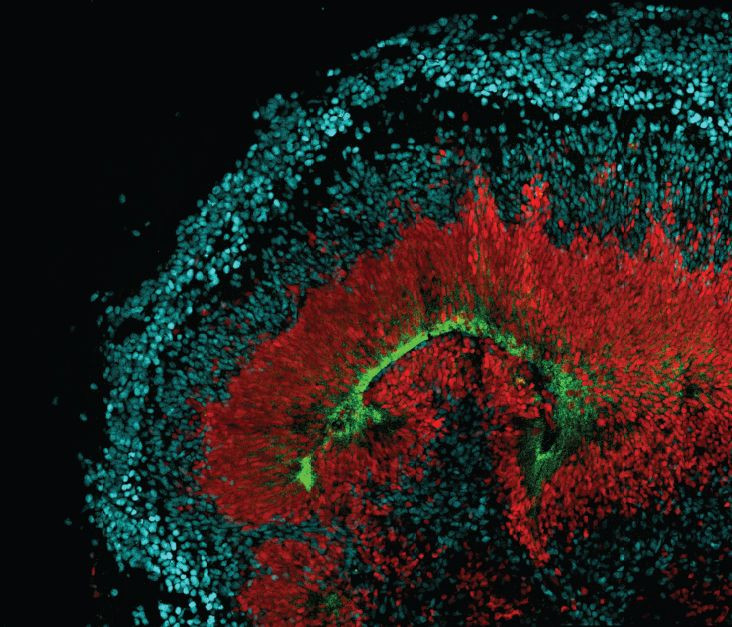Zika Virus May Hijack Protein On Neural Stem Cells, Making Fetuses Especially Vulnerable To Infection

The most recent Zika outbreaks have caused a resurgence in both public and clinical interest in the mosquito-borne virus. Many researchers have focused on how the disease affects pregnant women, and a team from the University of California, San Francisco may have discovered how exactly Zika messes with neural stem cells during pregnancy.
The researchers found that Zika hijacks AXL surface receptors, a certain protein found on neural stem cells, also called radial glial cells, which could explain how Zika enters cells to infect them. Normally involved in cell division, the receptors only show up in the middle trimester of pregnancy as the neural stem cells turn into several cell types that build the cerebral cortex. The stem cells of the retina also show AXL receptors. Disrupting this range of cells would cause symptoms consistent with those associated with Zika in a developing fetus, including eye lesions, microcephaly, and brain folds.
"While by no means a full explanation, we believe that the expression of AXL by these cell types is an important clue for how the Zika virus is able to produce such devastating cases of microcephaly, and it fits very nicely with evidence that’s available,” said senior study author Dr. Arnold Kriegstein, director of the Eli and Edythe Broad Center of Regeneration Medicine and Stem Cell Research, in a statement. “AXL isn’t the only receptor that’s been linked with Zika infection, so next we need to move from ‘guilt by association’ and demonstrate that blocking this specific receptor can prevent infection.”
Though it isn’t alone in being associated with Zika, AXL is the only receptor both necessary and sufficient for Zika entry, Kriegstein told Medical Daily via email. “It is the key Zika virus entry factor, and we were surprised to find that it is so highly expressed in the neural stem cells of the developing brain.”
The Kriegstein lab has always had an interest in brain development, and after the Zika outbreak, first authors Tomasz Nowalowski and Alex Pollen noted that previous studies revealed viruses similar to Zika used AXL as an entry point for infection. They then decided to examine AXL’s presence across different cell types in mouse and ferret brains, along with human stem-cell derived brain structures and developing human brain tissue. The radial glial cells expressed AXL in each of the models.
The team found AXL most often in places where neurons touched blood vessels or cerebrospinal fluid — this position made it especially easy for Zika to sneak through and get to vulnerable cells.
Kriegstein said the researchers still don’t know why Zika is so particularly virulent to the developing brain. A possibility, though, could be that travel through the placental-fetal barrier is easy, or that Zika has a talent for entering cells more readily than other infections.
“The next step is to prove AXL is the key Zika entry factor causing microcephaly by blocking AXL and showing that this is sufficient to block infectivity of the virus,” Kriegstein told Medical Daily. “If successful, this could lead to treatments to protect the fetal brain following maternal infection.”
Source: Nowakowski T, Pollen A, Di Lullo E, Sandoval-Espinosa C, Bershteyn M, Kriegstein A. Expression Analysis Highlights AXL as a Candidate Zika Virus Entry Receptor. Cell Stem Cell. 2016.



























